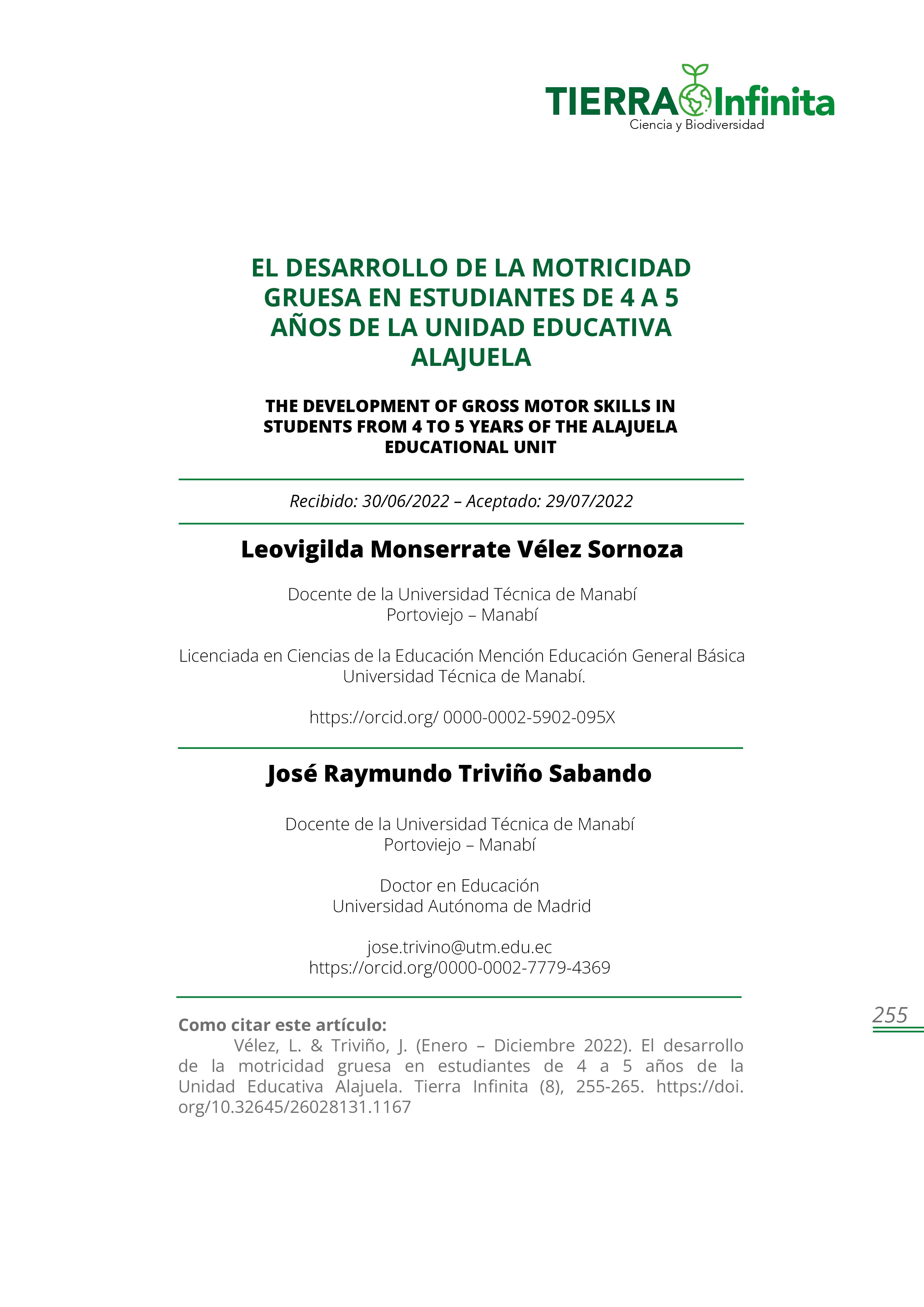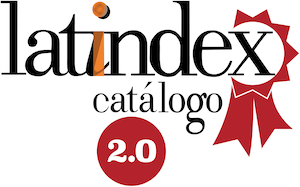The development of gross motor skills in student from 4 to 5 years of the Alajuela educational Unit
DOI:
https://doi.org/10.32645/26028131.1167Keywords:
preschool children, motor ability, gross motor skillsAbstract
During the early years, the development of gross motor skills is one of the leading indicators of neurological maturation in preschool children. After the Covid 19 pandemic that forced the performance of educational actions at home, the return to face-to-face sessions has revealed some deficits in skill achievement. This research aimed to determine the level of gross motor development of children aged 4 to 5 years from the Alajuela School, located in a rural area of Portoviejo. A quantitative approach was used, with a descriptive scope with a non-experimental cross-sectional design. All the children in the preschool section, consisting of 30 infants, were taken. An evaluation scale was applied following the methodological orientations according to the age subscribed in the initial education curriculum. The main results show that, although the virtual guided teaching activities were discontinuous, the children show a level of gross motor development acceptable for their age. However, actions are suggested to strengthen these skills in the group, especially in children who most need them
References
- Bermudez Ferrales, M., Poblete Valderrama, F., Pineda Espejel, A., Castro Rodriguez, N., & Inostroza Ordenes, F. (2018). Nivel de desarrollo motor grueso en preescolares de México sin profesores de educación física. Revista Ciencias de La Actividad Física, 19(1), 1–7. https://doi.org/10.29035/rcaf.19.1.8
- Cerdas, J., Polanco, A., & Rojas, P. (2002). El niño entre cuatro y cinco años: características de su desarrollo socioemocional, psicomotriz y cognitivo-lingüístico. Revista Educación, 26(1), 169–182. https://www.redalyc.org/pdf/440/44026114.pdf
- Colcha Concha, J. P., & San Lucas Solórzano, C. E. (2021). Análisis comparativo del desarrollo motriz de niños de 4 y 5 años en contextos educativos urbanos y rurales. Explorador Digital, 5(3), 61–84. https://doi.org/10.33262/exploradordigital.v5i3.1752
- Educación, M. de. (2018). Guía Metodológica para la Implementación del Currículo de Educación Inicial (Única). UNESCO.
- Enriz, N. (2014). Juego, concepto y ordenamiento de una práctica escurridiza. Espacios En Blanco., 24(Revista de Educación.), 17–33.
- Hernández, R., Fernández, C., & Baptista, P. (2014). Metodología de la investigación (Sexta edic).
- Luarte Rocha, C., Poblete Valderrama, F., & Flores Rivera, C. (2014). Nivel de desarrollo motor grueso en preescolares sin intervención de profesores de educación física, Concepción, Chile. Revista Ciencias de La Actividad Física, 15, 7–16.
- Ministerio, E. (2014). Currículo Educación Inicial 2014. Currículo Educación Inicial 2014, 1–69. https://educacion.gob.ec/wp-content/uploads/downloads/2016/03/CURRICULO-DE-EDUCACION-INICIAL.pdf
- Salazar, P., & Jiménez, J. (2020). Diferencias en la competencia motriz percibida de una población infantil según la región geográfica. Sportis: Revista Técnico-Científica Del Deporte Escolar, Educación Física y Psicomotricidad, 6(2), 246–265.

Downloads
Published
Issue
Section
License
Copyright (c) 2022 Leovigilda Monserrate Vélez Sornoza, José Raymundo Triviño Sabando

This work is licensed under a Creative Commons Attribution-NonCommercial-NoDerivatives 4.0 International License.
El autor mantiene los derechos intelectuales y morales de su obra, autorizando a la editorial de la Revista Tierra Infinita la difusión y divulgación de su contenido con fines estrictamente académicos y de investigación, sin fines de lucro.










